
Foundation on the Fly – Shaping the Give with a Single Toy
Hops and I were working on creating a Wait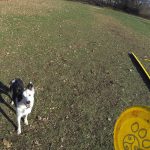 Waiting on cue and situationally is extremely important for disc dog freestyle training. The competition field might not see too much waiting going on as everything is supposed to be happening in flow,... More with a Bite and it became clear that the tugs I was using were damaged and were causing a problem. I switched to this single tug and ran into an issue. Hops does not have a strong Give
Waiting on cue and situationally is extremely important for disc dog freestyle training. The competition field might not see too much waiting going on as everything is supposed to be happening in flow,... More with a Bite and it became clear that the tugs I was using were damaged and were causing a problem. I switched to this single tug and ran into an issue. Hops does not have a strong Give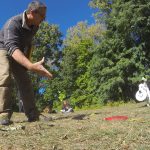 The Give is a retrieve to the hand. A cued Give is a foundational skill that is not super useful in the actual performance of disc dog freestyle, and has huge applications for... More behavior.
The Give is a retrieve to the hand. A cued Give is a foundational skill that is not super useful in the actual performance of disc dog freestyle, and has huge applications for... More behavior.
He’s a Jack, Give is not the most fun work in the world. I’ve isolated and done a tiny bit of work on the skill with Hops, but when confronted with a training situation where we had to rely on the Give (single toy), we needed to do some Foundation on the Fly.
Cuing the Give
Initially, I started out Cuing the Give, in hopes that Hops would be able to perform the skill. Well, that didn’t work so well…
Actually, it will work, cuing Give, providing a Dead Fish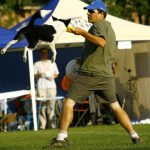 A Fish is a leaping catch that ends with the dog passing the disc back to the handler before landing back on the ground. The basic idea is catch and release, Fishing is... More for the dog to tug on, and reinforcing well will definitely teach a dog to give. But it won’t do it in 5 minutes.
A Fish is a leaping catch that ends with the dog passing the disc back to the handler before landing back on the ground. The basic idea is catch and release, Fishing is... More for the dog to tug on, and reinforcing well will definitely teach a dog to give. But it won’t do it in 5 minutes.
Shaping the Give
ShapingShaping is a learning technique where successive approximation and a Positive Marker are used to teach behaviors and communicate concepts. Successive approximation essentially means continually closer to the target behavior. So Shaping is... More the Give with a single toy has 3 steps:
- Capture the Give and MarkShort for “Positive Marker”, a Mark is a word or signal given at the exact moment a desired behavior is performed. It’s like a clicker. Mark can also mean the act of marking... More with Positive MarkerA Positive Marker is a signal that is used to communicate the exact instant that a behavior is correct and that predicts a positive consequence. A click of the clicker is a Positive... More
- Capture the Give and Mark with Give Cue
- Cue the Give and Mark with Yes
Step 1 – Capture the Give and Mark with Positive Marker
When the dog is tugging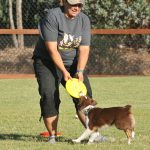 Bitework is an activity or a game that consists of biting and dropping a toy on cue. Cued Bites and cued Drops (and Gives) can be used to teach and reinforce many behaviors.... More, we’re going to provide a real lame tugging partner. We call this a Dead Fish Tug
Bitework is an activity or a game that consists of biting and dropping a toy on cue. Cued Bites and cued Drops (and Gives) can be used to teach and reinforce many behaviors.... More, we’re going to provide a real lame tugging partner. We call this a Dead Fish Tug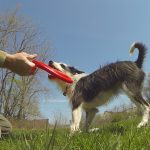 The dead fish tug is just a super boring game of tug from your dog’s perspective. It takes two to tug on something. Tugging is only fun if the other side plays the... More. It’s lame. A couple of times during this video you can see the tension on the toy decrease – you can see how lame the tug is.
The dead fish tug is just a super boring game of tug from your dog’s perspective. It takes two to tug on something. Tugging is only fun if the other side plays the... More. It’s lame. A couple of times during this video you can see the tension on the toy decrease – you can see how lame the tug is.
This decrease in the tension makes if far more likely that the dog will initially Give the toy. The Positive Marker isolates the behavior and the Bite reinforcement makes it more likely to happen again.
At this stage, it is very important that we give the reinforcement every time the dog gives. We are reinforcing the Give behavior, nothing more.
Step 2 – Capture the Give and Mark with Give Cue
The next step is to Capture the Give and mark with the Give Cue. It sounds a little wacky, but it’s really great for attaching value directly to the Give Cue.
Step 3 – Cuing the Give and Marking with Positive Marker
The final step is to get tugging, reduce the intensity with that Dead Fish Tug, then say the Give Cue and stick to the Dead Fish tug. Mark with a Positive Marker and reinforce with a Bite.




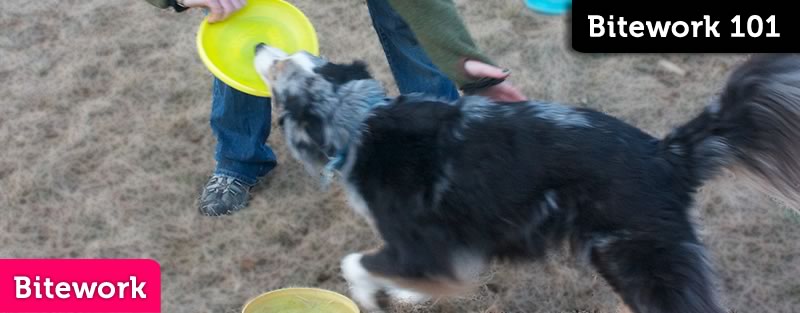

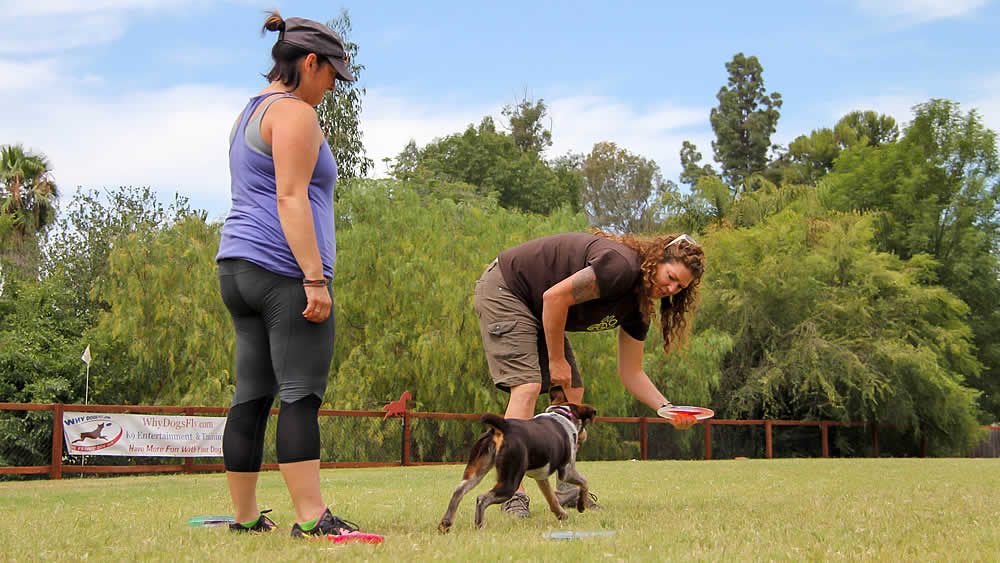
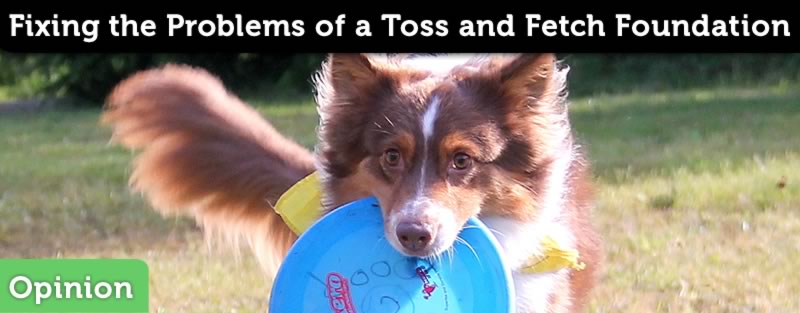
It seems as though you are giving Hops mixed messages. You are saying “mine” as a drop cue yet you take it away from him and that get’s his prey drive going again. I’m not sure if there is a way around this or not, just observing.
Also, why do you not use correction more often? It will help considering he already knows what he’s supposed to do.
Zachary
You are not quite on the ball here with your assessment, Zachary.
A Drop is different from a Give or “Mine”.
Not having distinction between Give and Drop is a big deal. Give is “in the hand” or “Drop, while sharing,” and Drop is to “Drop it where ever you may be.”
There is a precursor to the verbal “Mine” cue, and that is the slack tension on the shared toy, so the game is already getting lame before I cue “Mine”. The compliance with the “Mine” cue ramps the game back up – the reinforcement is more biting.
I hope this makes sense, it’s a HUGE deal. Rewarding with energy levels of the game – good performance = more biting and dropping, poor performance = less biting and dropping.
As far as corrections, this really gets into an interesting area. You think Hops understands his job here. He was with us for 3 months. 1 month of no real playing because I had to film class stuff with him, and I wanted a green dog – so no work at that time, and 2 months of getting his feet under him as a member of our pack.
He did not understand the “Mine” cue, and had only received the opportunity to Give a handful of times before this session.
Corrections inhibit behavior. They don’t create more. I don’t like to work with corrections in games like this because I want the dog to feel free to act in these situations – many of the coolest tricks/sequences I’ve created have happened because of our dogs’ creativity and their lack of fear to “give it a shot”. Corrections make it more likely that behaviors will be avoided instead of performed.
Again, hope this makes sense.
Peace~
Why can’t drop be both for in hand and not in hand? I’m using it for both and I don’t see a problem. I just treat it as a release cue wherever they may be.
Good point on the corrections. There are various reasons for using and not using corrections. As long as corrections do not instill fear in the dog so much that they are afraid to do a certain thing. Corrections should ONLY come after the dog knows better.
So we teach the dog the right thing to do.
Then when we are certain, and only certain, do we implement the sparing use of corrections.
Thus corrections can be seen as the other side of the boundary (Praise being one of them) to guide the dog to do the right thing. It is only to help the dog better understand (It should never confuse them or cause them to fear acting a certain way) and provide a dissatisfaction upon the wrong action during a particular cue.
It helps guard the easily erasable nature of cues during the learning stage. If we are very careful cuing a particular action (let’s say the drop, for example), there may still be a time when we fail to predict what the dog will do. Then should we use a correction? In my opinion, it helps them put “two and two” together. Done properly, they’ll be like.. “ooh, I get it now!”
Zachary
A Drop and Give are totally different behaviors. To the hand vs out of your mouth, totally different concepts. I used to think that it was OK to conflate them. I have found that understanding and being able to perform both provides superior performance.
As far as corrections go, I’ll leave you with this:
The only one who knows what is being corrected is the dog.
Peace~